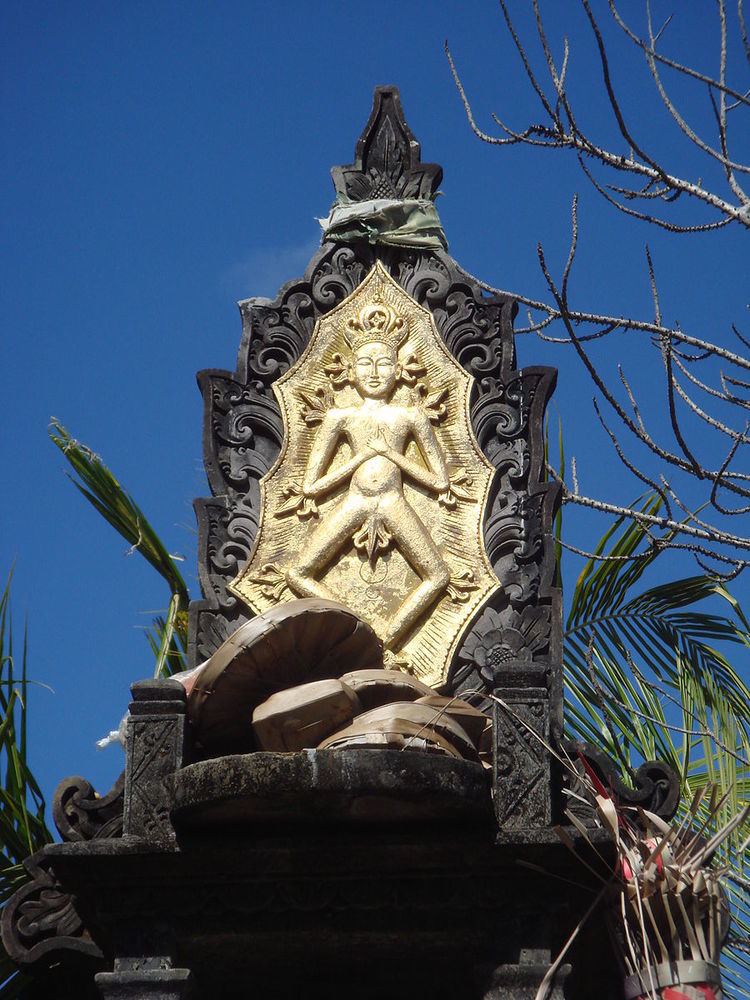 | ||
So hyang high notes and climaxes
A hyang (Kawi, Javanese, Sundanese, and Balinese) is an unseen spiritual entity that has supernatural power in ancient Indonesian mythology. This spirit can be either divine or ancestral. The reverence for this spiritual entity can be found in Sunda Wiwitan, Kejawen, and Balinese Hinduism. In the modern Indonesian this term tends to be associated with gods, devata, or God. The realm where the hyangs reside is called kahyangan; now a synonym for svarga or heaven in modern Indonesian.
Contents
Origin
The term "hyang" now widely associated with Balinese Hinduism developed in ancient Java and Bali more than a millennium ago. However this term actually has an older origin, it has its root in the indigenous animism and dynamism beliefs of Austronesian people that inhabit the Indonesian archipelago. Native pre-Hindu Buddhist and pre-Islamic Indonesians venerated and revered ancestral spirits, they also believed that some spirits may inhabit certain places such as large trees, stones, forests, mountains, or any sacred places. The "hyang" concept indigenously developed in the archipelago and not considered to have originated from Indian dharmic religions.
Before the adoption of Hinduism, Buddhism and Islam, the natives of the Indonesian archipelago believed in powerful but unseen spiritual entities that can be both benevolent or malevolent. They also believed that the deceased ancestor is not gone away or disappeared completely. The ancestral spirit may gain god-like spiritual power and remain involved in their offspring's worldly affairs. That is why the veneration and reverence to honor ancestors is an important element in the belief system of native ethnic groups, such as Nias, Dayak, Toraja, Papuan ethnic groups, as well as many ethnic groups in Indonesia.
In ancient Sundanese, Javanese, and Balinese society, this unseen spiritual entity is identified as "hyang". These ancestral divine spirits are believed to inhabit high places, such as mountains, hills, and volcanoes. These mountainous regions are considered sacred realms, as the abode of gods and the resting place for the soul of the ancestors.
Etymology
In Sundanese, the term "nga-hyang" means "disappear" or "unseen". It is suggested that the word "hyang" has linguistic relation with the Indonesian word: "hilang" which means "disappear". In its development, the term "hyang" become the root word for many terms that still known and used in modern Indonesian:
Characteristics
Hyang are said to only move in straight lines. Accordingly, traditional Balinese buildings have a wall called an aling-aling just inside the doorway, which keeps the spirits out because they only move in straight lines, and hence bounce off. Similar walls can be seen at the entrance of some Javanese cemeteries. Parallel beliefs are found in other spiritual traditions, as in British corpse roads.
